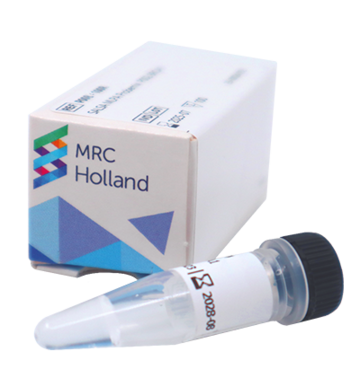SALSA MLPA Probemix P148 TGFBR1-TGFBR2-TGFB2-SMAD3 is a research use only (RUO) assay for the detection of deletions or duplications in the TGFBR1, TGFBR2, TGFB2 and SMAD3 genes, which are associated with Loeys-Dietz syndrome (LDS).
LDS is a connective tissue disorder that can manifest in a variety of ways, amongst others with vascular findings, skeletal manifestations, craniofacial features and cutaneous findings. The severity and nature of symptoms can vary greatly between affected individuals, with significant extravascular systemic findings in young children to predominantly thoracic aortic aneurysm/dissection occurring in adults. LDS individuals were first described with a Marfan syndrome-like phenotype and LDS has some features in common with Marfan syndrome, however LDS and Marfan syndrome are distinct syndromes and have different genetic causes. Pathogenic variants in multiple genes are associated with LDS. The highest proportion of pathogenic variants is found in TGFBR2, followed by TGFBR1, TGFB2 and SMAD3.
The TGFBR1 gene (9 exons) spans ~49 kb of genomic DNA and is located on chromosome 9q22.33, ~101 Mb from the p-telomere.
The TGFBR2 gene (7 exons) spans ~88 kb of genomic DNA and is located on chromosome 3p24.1, ~31 Mb from the p-telomere.
The TGFB2 gene (7 exons) spans ~99 kb and is located on chromosome 1q41, ~217 Mb from the p-telomere.
The SMAD3 gene (9 exons) spans ~130 kb and is located on chromosome 15q22.33, ~65 Mb from the p-telomere.
More information is available at https://www.ncbi.nlm.nih.gov/books/NBK1133/.





